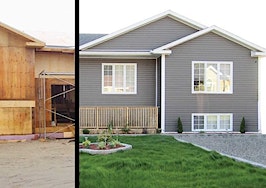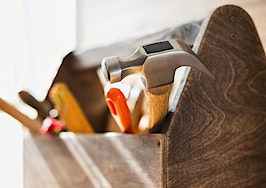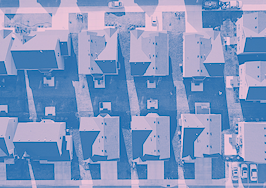- Out of the top 10 markets with highest share of flips, Florida holds seven spots.
- It takes 159 days to flip a home in the New York metro.
- In the Los Angeles metro, where flips encompass 6.39 percent of the market, it takes five-and-a-half months (168 days) to flip a home.
- Chicago’s metro flipping comprises 5.57 percent of sales, but it takes 158 days to flip a home.
- In San Jose-Sunnyvale-Santa Clara, flipping takes up 5.45 percent of the market, and averages 114 days to sell.
According to a recent report from CoreLogic, flipping activity is more prevalent in Florida cities than any other state in the country. Out of the top 10 markets with highest share of flips, Florida holds seven spots.
Lakeland-Winter Haven is No. 3 in highest share of flipped properties, where flips make up 7.54 percent of the market.
The other top Florida markets include:
- Miami-Miami Beach-Kendall at No. 5 (6.85 percent)
- Tampa-St Petersburg-Clearwater at No. 6 (6.80 percent)
- Orlando-Kissimmee-Sanford at No. 7 (6.80 percent)
- Deltona-Dayton Beach-Ormond Beach at No. 8 (6.74 percent)
- Fort Lauderdale-Pompano Beach-Deerfield Beach at No. 9 (6.60 percent)
- Palm Bay-Melbourne-Titusville at No. 10 (6.60 percent)
Aside from Lakeland-Winter Haven, the top seven Sunshine State markets increased in flipping activity since last year. However, Florida’s top flipping markets remain below their peak prior to the 2008 crash.
CoreLogic says flipping was at an all-time high before the housing crash since credit was undoubtedly accessible. Additionally, many investors assumed prices would continue to rise.

Although home prices continue to grow on a national scale, as they have been for the past four years, not all markets experience the same growth patterns, and it seems as though flippers are keeping up on the trends.
Flipping rare on the East Coast
CoreLogic states most of the markets with lower flipping activity also have lackluster home price appreciation. Further, it takes longer to flip a home in lower-activity markets compared to higher-activity markets.
[Tweet “Most markets with lower flipping activity also have lackluster home price appreciation.”]
Hartfort-West Hartford-East Hartford Connecticut came in at number one with just 1.75 percent of flips. The median gross profit is $82,000 and the median percent gross profit is 84 percent. It takes 195 days to flip a home in Hartford.
New York-Jersey City-White Plains in New York/New Jersey holds a lower 3.09 percent flips. The median percent gross profit is 54.8 percent, and the median gross profit is $120,000. It takes 159 days to flip a home in the New York metro.
Is flipping overwhelming U.S. markets?
High shares of flips can damage local markets when they push prices faster than natural home price appreciation. Frequent flips can result in home prices accelerating faster than income and other economic factors.
But there’s no cause for concern quite yet, says CoreLogic. While flipping activity did hold a high share in some markets prior to the recession, they were below peak in the first quarter of this year.
Nationally, the flipping-total sales ratio is at 4.4 percent — compared to its peak of 6.4 percent in the first quarter of 2005. The number of flips is 70 percent from its peak value in the second quarter of 2005 because overall home sales were lower in the first quarter this year.
Flip sales less swift
The average time it takes to flip a property was 154 in the first quarter, compared to 150 days in the second quarter of 2006 — the peak average time prior to the housing crash.
CoreLogic says number of days to flip seems to be trending upward, as well.
In the Los Angeles metro, where flips encompass 6.39 percent of the market, it takes five-and-a-half months (168 days) to flip a home.
Chicago’s metro flipping comprises 5.57 percent of sales, but it takes 158 days to flip a home.
In San Jose-Sunnyvale-Santa Clara, flipping takes up 5.45 percent of the market, and averages 114 days to sell.
How much do flippers make?
The median gross profit per flipped piece of real estate is $56,000, which is 17 percent higher than the previous high of $48,000, the profit during the third quarter of 2005 when flipping was more prevalent.
While some markets present high return opportunities, the national percentage gross profit now is at 41.1 percent, compared with 47.7 percent in 2009.
Fewer distressed sales could be contributing to a lower profit percentage. Distressed sales fell to 11 percent this past January, says CoreLogic.
Email Jennifer Riner







